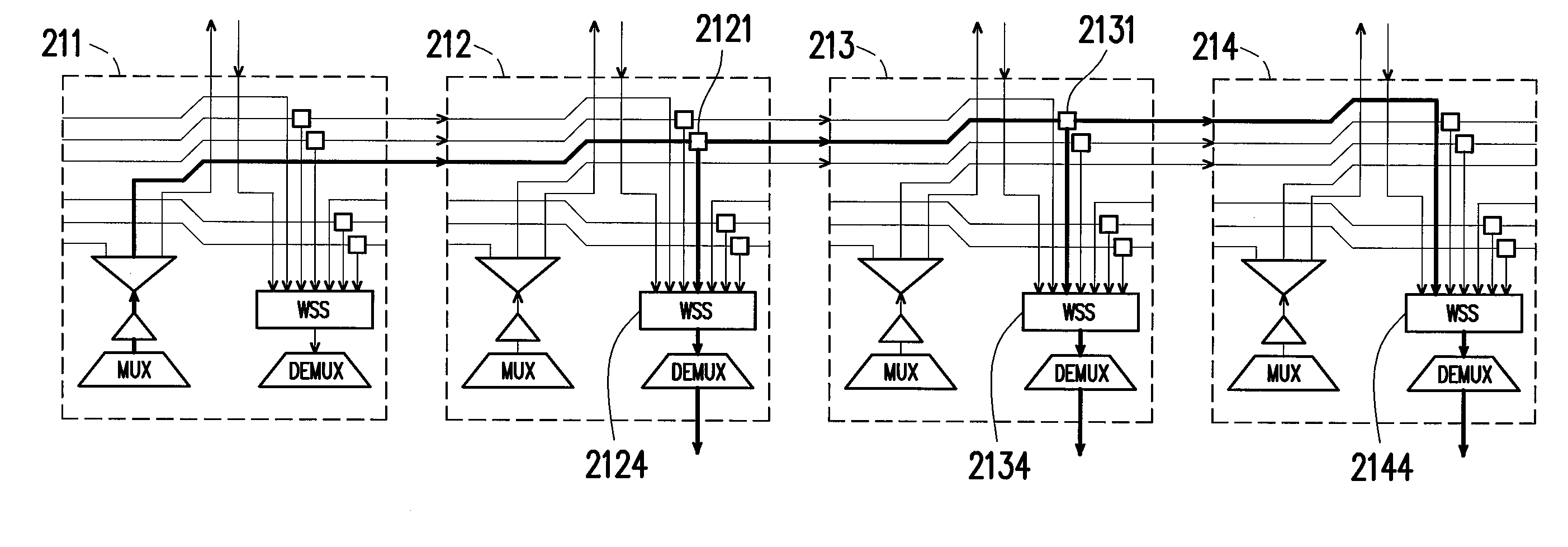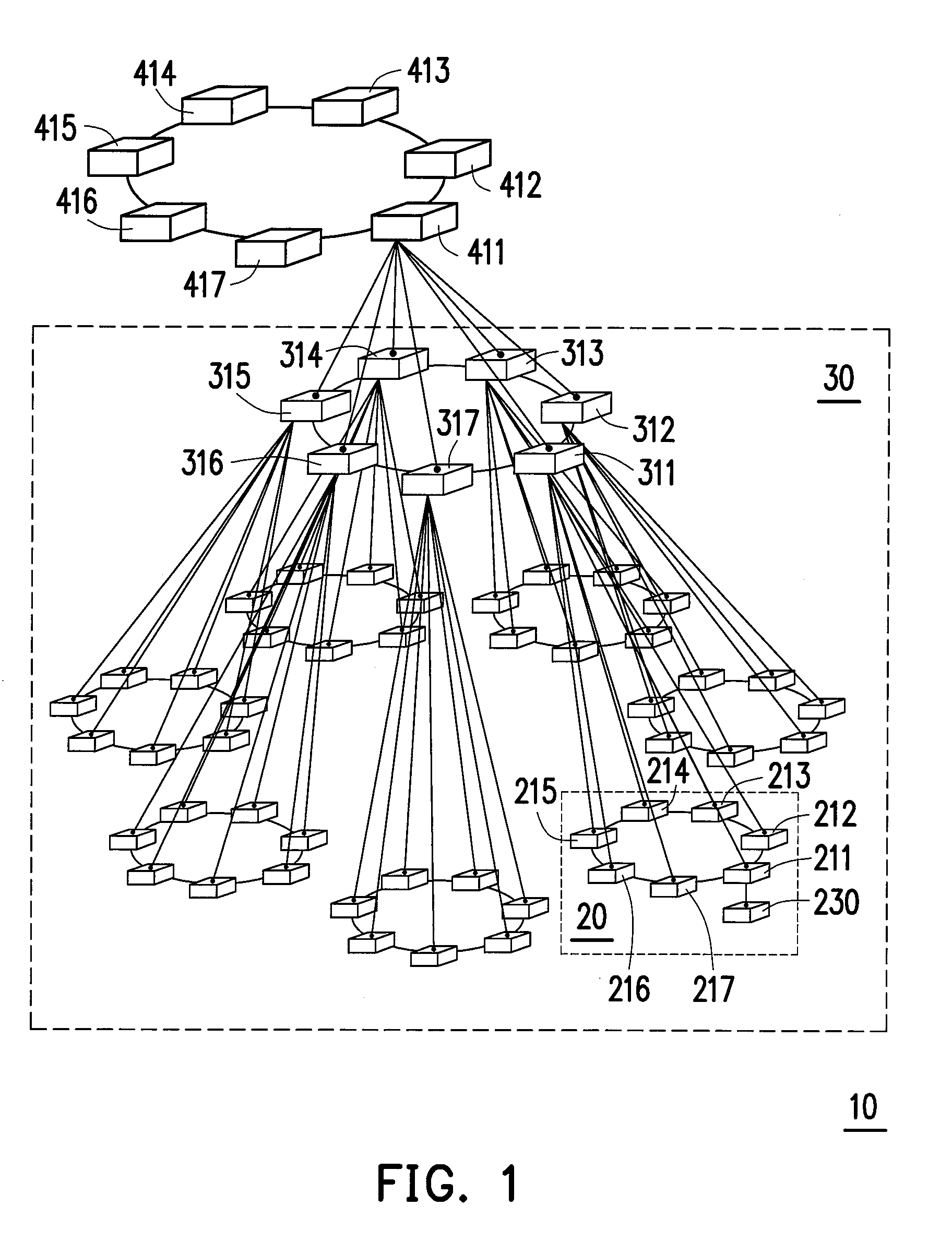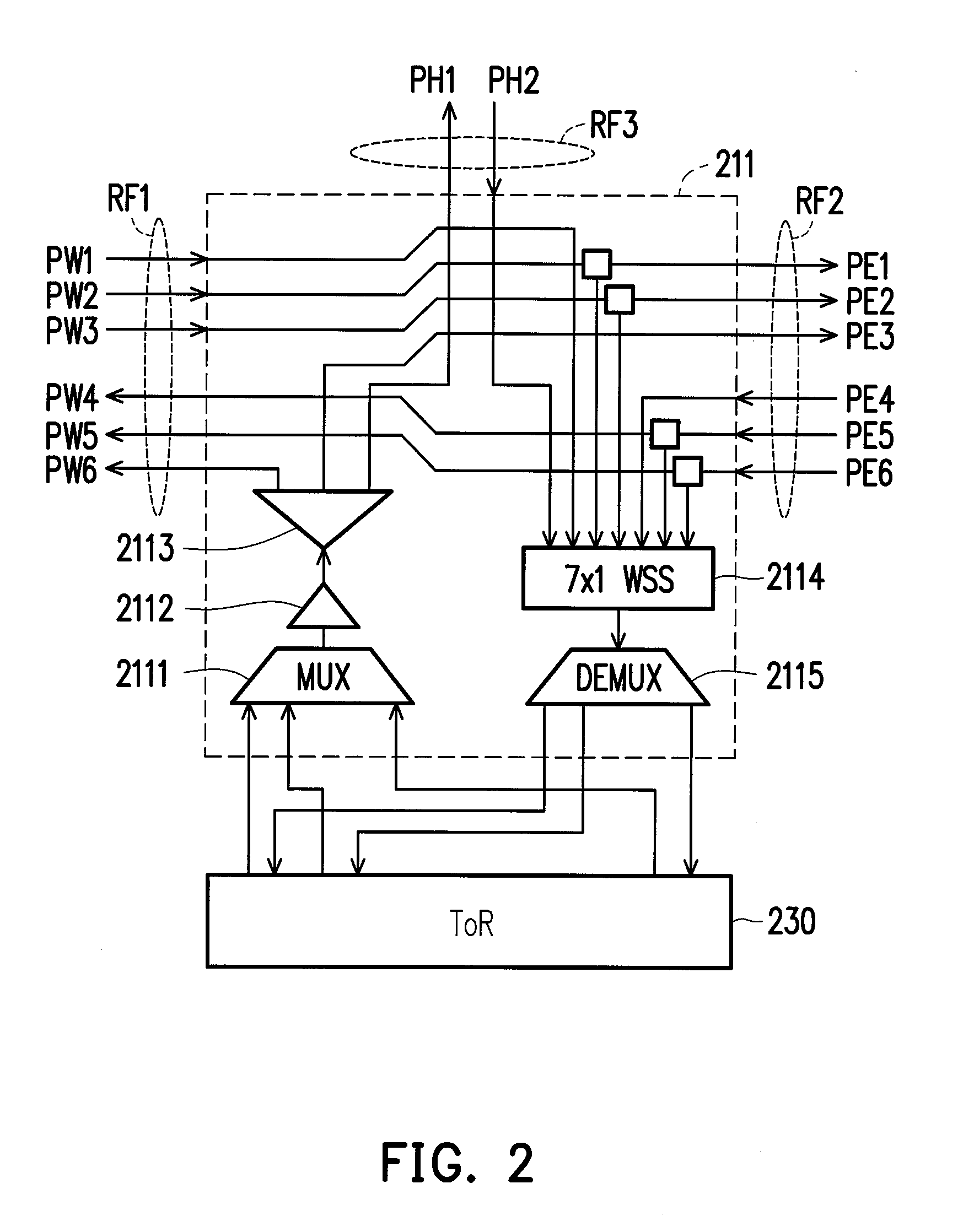Optical data center network system and optical switch
a network system and optical switch technology, applied in the field of network systems, can solve the problems of high bandwidth and low latency for data transmission, large amount of east-west server-to-server traffic within dcns, and still limited transmission rate of electrical switches, so as to achieve high bandwidth and low latency, high reliability, and high reliability
- Summary
- Abstract
- Description
- Claims
- Application Information
AI Technical Summary
Benefits of technology
Problems solved by technology
Method used
Image
Examples
Embodiment Construction
[0027]Although current data center networks (DCNs) employ optical transmission, electrical switches are still used to switch packets, for example, top of rack (ToR) switches, aggregation switches and core switches, etc. These electrical switches are generally connected to each other in two kinds of architectures: a scale-up architecture and a scale-out architecture.
[0028]The scale-up architecture adopts a hierarchical structure in which the switches at higher level of hierarchy have higher capacity and more connection ports to meet an increasing traffic demand. In order to ensure sustainable scalability, the scale-up architecture adopts oversubscription between tiers, such that the bisection bandwidth offered can be less than the worst-case aggregate bandwidth. The scale-up architecture is quite efficient in short term, however a lot of problems may still be caused by a poor modularity capability, gradually increased latency and latency variation.
[0029]On the other hand, in the scal...
PUM
 Login to View More
Login to View More Abstract
Description
Claims
Application Information
 Login to View More
Login to View More - R&D
- Intellectual Property
- Life Sciences
- Materials
- Tech Scout
- Unparalleled Data Quality
- Higher Quality Content
- 60% Fewer Hallucinations
Browse by: Latest US Patents, China's latest patents, Technical Efficacy Thesaurus, Application Domain, Technology Topic, Popular Technical Reports.
© 2025 PatSnap. All rights reserved.Legal|Privacy policy|Modern Slavery Act Transparency Statement|Sitemap|About US| Contact US: help@patsnap.com



